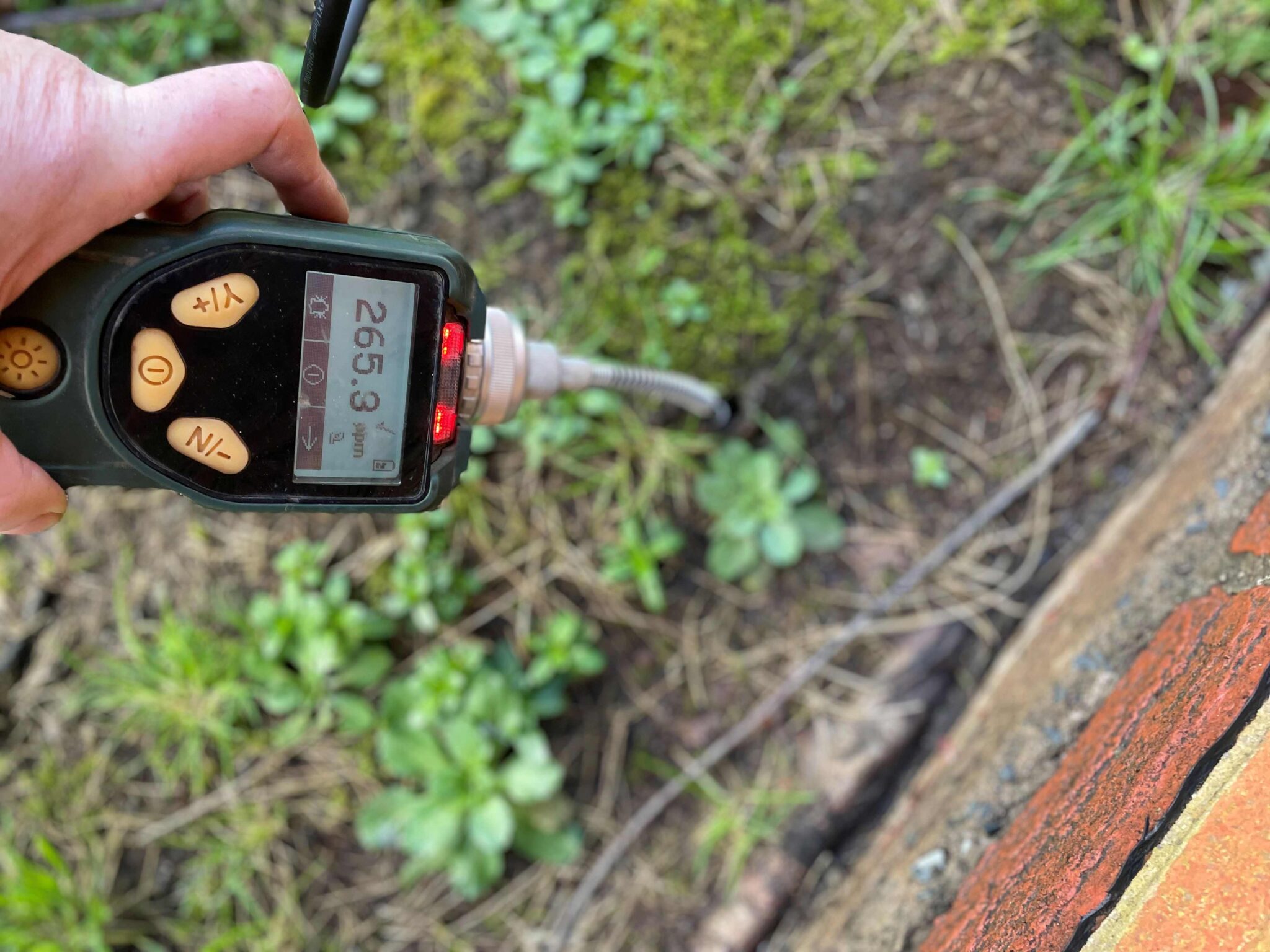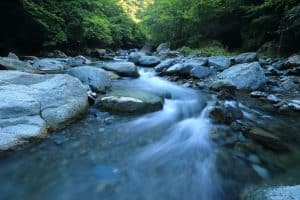
Oil spills on groundwater
Oil spills on groundwater? Our streams and rivers are fed by groundwater all year round.
Oil spills on groundwater happen regularly and it is important that we understand how this essential resource can be impacted in order to protect it in the future. Oil spills on groundwater
What is groundwater?
Oil spills on groundwater
What is groundwater? Groundwater is the water found underground in the cracks and spaces in soil, sand and rock. It is stored in and moves slowly through geologic formations of soil, sand and rocks called aquifers. Northern Ireland oil spills on groundwater
Why is Groundwater Important?
Why is groundwater important? Well, historically groundwater has been the main source of clean and pure drinking water available to us. Imagine our ancestors surviving without wells or springs to drink from? Rivers and streams are easily contaminated by bacteria such as cryptosporidium and other pathogens that can lead to serious illness in humans. Water consumed from groundwater sources is rich in minerals which we can’t get from surface water. But groundwater absorbs a large proportion of rainfall, slowing its movement down and gradually releasing it as baseflow for rivers. This prevents both flooding and drought, evening out the levels of our rivers. Northern Ireland oil spills on groundwater.
Types of Aquifer
There are two main types of aquifer which can then be subdivided further. Initially there are superficial aquifers. These are found at or near the surface and are usually caused by deposits of sands and gravels left by water features such as lakes, rivers or old raised beach deposits. Water from rainfall percolates down through the soil and accumulates in the spaces between the aquifer particles.
The second main type are bedrock aquifers. Bedrock aquifers are as the title suggests aquifers that reside in bedrock. These can be subdivided into many types, but there are two main classifications. The first is where the water of the aquifer is in fractures of the rock. This is the case in limestone aquifers or such as in basalt. The second type is where the aquifer exists in the pores between the grains of the rock, this is the case in a sandstone aquifer for instance. Oil spills on Groundwater in Northern Ireland.
Oil spills on Groundwater – Groundwater Vulnerability
Groundwater vulnerability. When we assess the risk to groundwater from any contaminant a key piece of information that is taken into account is the groundwater vulnerability. This is an assessment of the amount of protection or lack thereof an aquifer has above it from potential contaminants spilled at the surface. Groundwater vulnerability scoring primarily takes into consideration two elements: How thick is the material covering the aquifer and how porous is the material? Oil leaks affecting groundwater in Northern Ireland.
How do we know if Groundwater is impacted by oil spills?
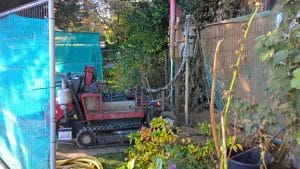
A Gaea Environmental drilling rig that we use to investigate deep into the strata where groundwater is found.
How do we know if groundwater is impacted? If following an initial site assessment we find that there is a risk to groundwater and the desktop part of the investigation reveals a high risk then a different type of investigation would be undertaken. So for instance, if we found that a customer had reported a large leak of oil but when we looked at the soil investigation we found that the plume area was small we know something is wrong. If we then found that the soils were sandy or rock was very near the surface then that would add further weight to the need for deeper investigation.
Typically we would then bring to a site mobile drilling rigs that can easily reach down into the bedrock. Cores are pulled out for examination and the boreholes are lined with solid and slotted sections to keep particles out near the surface but allow water in at depth. The surface opening of the borehole is usually capped and the gap between the pipe lining and the soils sealed with bentonite to prevent contamination from the surface. Water samples can then be routinely taken from the borehole as required.
How to remove Oil Spills from groundwater?
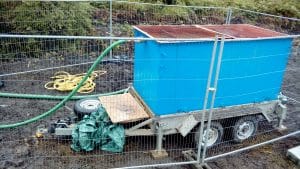
A trailer mounted Oil water Separator used to removal of oil from groundwater in Northern Ireland.
How to remove oil spills from groundwater? There are a large number of techniques at our disposal. Initially a lot of effort will be invested into removing “free phase oil” which is the oil that you would imagine floating on the waters surface. This would be removed by pumping the groundwater back up through the boreholes with specialised pumps where it can be treated via an oil water separator. The cleaner water exiting the oil water separator will normally be further treated with very specialised activated charcoal filters to remove the dissolved element of the oil that can’t be separated by gravity. Once further treated by activated carbon the groundwater would normally be discharged back to groundwater again and the process is repeated over and over again.
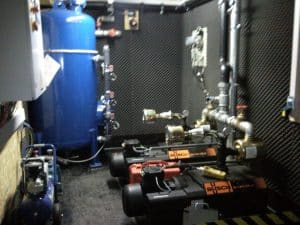
Inside one of Gaea Environmental’s mobile treatment units. These units can be taken to site anywhere in Northern Ireland and set up for oil spill groundwater treatment.
A second type approach can be taken, that of injecting specialised reagents, specific to the type of contamination into the ground to chemical react with the contaminant, decomposing it until a less harmful material. These reagents can be biological where bacteria are used to metabolise contaminants or bio-augmenting where we add the nutrients required to optimise the metabolism of native micro-organisms in the aquifer. Chemical reagents can be added also that depending on the contaminant will either release oxygen or hydrogen to assist at a biochemical level in the decomposition of contamination.
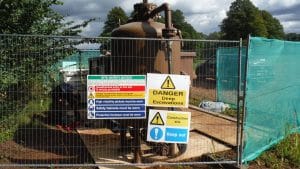
A medium sized granulated activated carbon vessel (GAC) is used to remove dissolved phase oil spill contaminants from groundwater in Northern Ireland.
Where is the groundwater in Northern Ireland?
Where is the groundwater in Northern Ireland? Superficial or surface aquifers tend to be found near any watercourse such as the main rivers, lakes etc. These can often be found some distance away from where the watercourse is currently as over the millenia watercourses change direction and start laying down sediments in new places. These include the Lagan valley, the Foyle catchment area, the Upper Bann, the Lower Bann, the Blackwater, the Clogher Valley and the majority of the coastline of Northern Ireland as sea levels of risen in the past. The main groundwater bearing rocks of Northern Ireland are from Belfast through the Lagan Valley and arising again in Co. Armagh & Tyrone. Other complexes exist such as the one that reaches from the Dungannon area and throughout much of Co. Fermanagh before reaching back towards Omagh. A third major groundwater complex is through the Glens of Antrim. The famous Giants Causeway pyroclastic flow left an aquifer that reaches from the North Coast of Northern Ireland to Lisburn.
If you live near one of these areas you might have groundwater below you! If you think you have an oil spill and need help please call us on 08000 541 361 or browse our website for further information.
